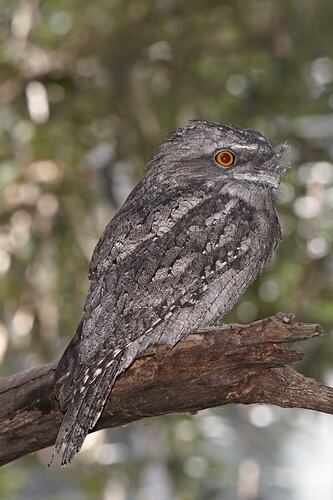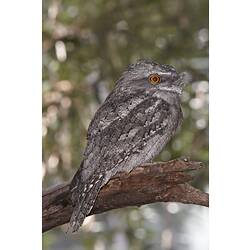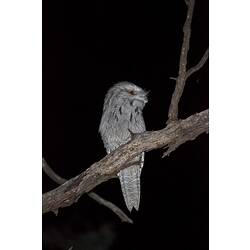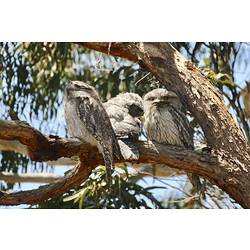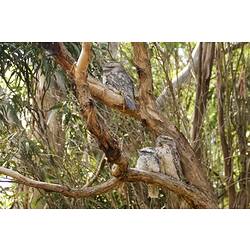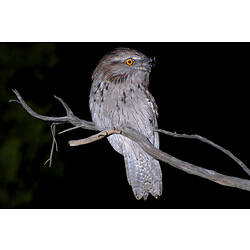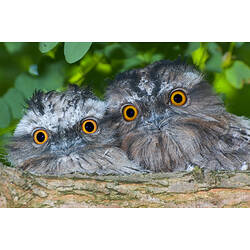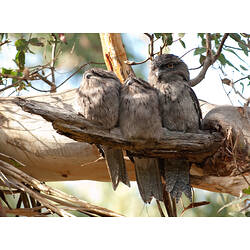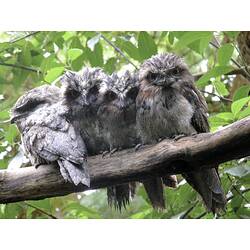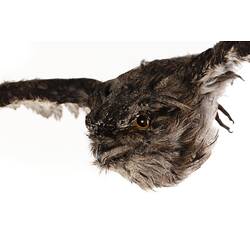General Description
Body mottled grey, brown and white with a dark grey stripe on the cheek. Bill thick and grey-brown with a clump of 'whiskers' on top. Bill to tail length is up to 53 cm. Call a distinctive repetitive low-frequency "oom-oom-oom-oom" call that can be heard at night.
Biology
Tawny Frogmouths are nocturnal, being most active from dusk until dawn and with their characteristic low frequency call being heard throughout the night. During the day, Tawny Frogmouths perch in trees that mirror their colouring to camouflage themselves. To further blend into the environment, they often perch with their neck outstretched to appear as part of the branch. They are commonly mistaken for owls due to their nocturnal habits and cryptic colouring. However, they belong to their own genus and are most closely related to the nightjars. During the breeding season (September to November), Tawny Frogmouths find a fork in a tree and build a loose nest made of sticks, and they can be easily viewed during this period. Both males and females incubate the eggs. Pairs usually return to the same tree, or one very close by, to nest each year.
Distribution
Mainland Australia and Tasmania.
Habitat
Almost all habitats including open woodlands, forests, parks and gardens.
More Information
-
Animal Type
-
Animal SubType
-
Brief Id
A nocturnal bird with large, round, yellow eyes and mottled grey-white feathers.
-
Colours
Brown, White, Grey
-
Maximum Size
53 cm
-
Habitats
-
When Active
Nocturnal
-
Diet
Insects
-
Diet Categories
Invertebrates, Insects
-
Endemicity
-
Commercial
No
-
Conservation Statuses
CITES: Not listed, FFG Threatened List: Not listed, EPBC Act 1999: Not listed, IUCN Red List: Least Concern
-
Taxon Name
-
Common Name
Tawny Frogmouth
-
Kingdom
-
Phylum
-
Subphylum
-
Class
-
Order
-
Family
-
Genus
-
Species Name
strigoides
